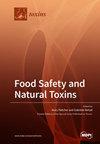Rapid and Sensitive Detection of Shiga Toxin-Producing Escherichia coli (STEC) from Food Matrices Using the CANARY Biosensor Assay
IF 3.9
3区 医学
Q2 FOOD SCIENCE & TECHNOLOGY
引用次数: 0
Abstract
Shiga toxin-producing Escherichia coli (STEC) causes a wide spectrum of diseases including hemorrhagic colitis and hemolytic uremic syndrome (HUS). Previously, we developed a rapid, sensitive, and potentially portable assay that identified STEC by detecting Shiga toxin (Stx) using a B-cell based biosensor platform. We applied this assay to detect Stx2 present in food samples that have been implicated in previous STEC foodborne outbreaks (milk, lettuce, and beef). The STEC enrichment medium, modified Tryptone Soy Broth (mTSB), inhibited the biosensor assay, but dilution with the assay buffer relieved this effect. Results with Stx2a toxoid-spiked food samples indicated an estimated limit of detection (LOD) of ≈4 ng/mL. When this assay was applied to food samples inoculated with STEC, it was able to detect 0.4 CFU/g or 0.4 CFU/mL of STEC at 16 h post incubation (hpi) in an enrichment medium containing mitomycin C. Importantly, this assay was even able to detect STEC strains that were high expressors of Stx2 at 8 hpi. These results indicate that the STEC CANARY biosensor assay is a rapid and sensitive assay applicable for detection of STEC contamination in food with minimal sample processing that can complement the current Food Safety Inspection Service (US) methodologies for STEC.利用 CANARY 生物传感器测定法快速灵敏地检测食品基质中产志贺毒素大肠杆菌 (STEC)
产志贺毒素大肠杆菌(STEC)可导致出血性结肠炎和溶血性尿毒症(HUS)等多种疾病。此前,我们开发了一种快速、灵敏、便携的检测方法,利用基于 B 细胞的生物传感器平台检测志贺毒素 (Stx),从而识别 STEC。我们将这种检测方法应用于检测以前发生过 STEC 食源性疫情的食品样本(牛奶、生菜和牛肉)中的 Stx2。STEC 富集培养基--改良胰蛋白胨大豆肉汤(mTSB)会抑制生物传感器检测,但用检测缓冲液稀释可减轻这种影响。对添加了 Stx2a 类毒素的食品样本进行检测的结果表明,估计检测限(LOD)为≈4 纳克/毫升。当这种检测方法用于接种了 STEC 的食品样品时,在含有丝裂霉素 C 的富集培养基中培养 16 小时后(hpi),它能够检测到 0.4 CFU/g 或 0.4 CFU/mL 的 STEC。这些结果表明,STEC CANARY 生物传感器检测法是一种快速、灵敏的检测方法,只需对样品进行最少的处理,就能检测出食品中的 STEC 污染,是美国食品安全检验局(US)目前检测 STEC 方法的补充。
本文章由计算机程序翻译,如有差异,请以英文原文为准。
求助全文
约1分钟内获得全文
求助全文
来源期刊

Toxins
TOXICOLOGY-
CiteScore
7.50
自引率
16.70%
发文量
765
审稿时长
16.24 days
期刊介绍:
Toxins (ISSN 2072-6651) is an international, peer-reviewed open access journal which provides an advanced forum for studies related to toxins and toxinology. It publishes reviews, regular research papers and short communications. Our aim is to encourage scientists to publish their experimental and theoretical results in as much detail as possible. There is no restriction on the length of the papers. The full experimental details must be provided so that the results can be reproduced.
 求助内容:
求助内容: 应助结果提醒方式:
应助结果提醒方式:


